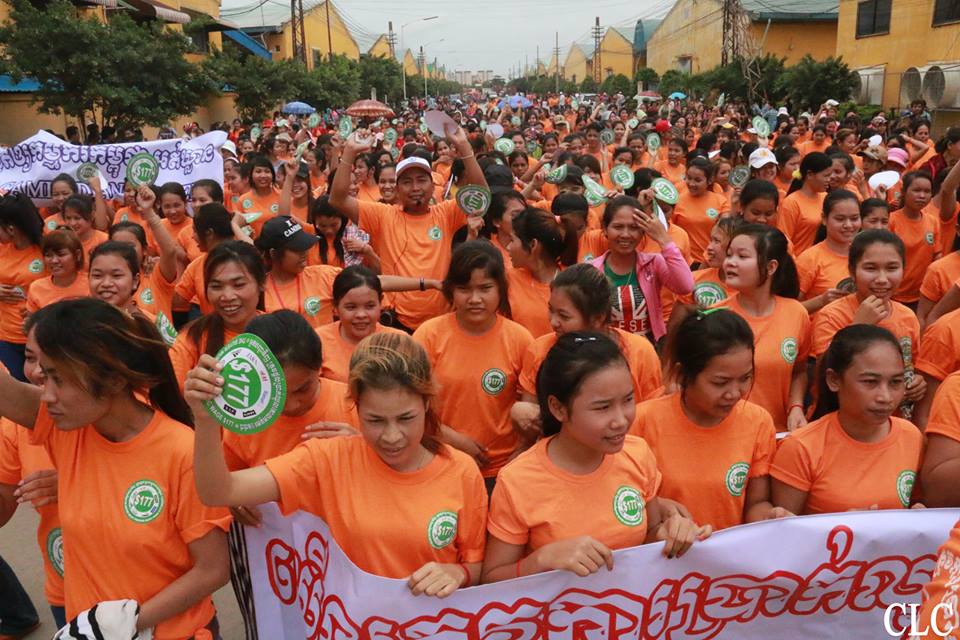The Cambodian government announced in recent days it would raise the monthly minimum wage in the textile and apparel industry to $128, an amount workers say falls far short of the amount needed to support themselves and their families and is only $8 above the poverty line.
The new minimum wage also is well below the government’s estimates of wages garment workers need: Late last year, a government-appointed committee announced that a minimum living wage should be between $167 to $177 a month. The minimum wage for garment workers at the time was $80 a month, and even with the increase, Cambodia has among the lowest monthly minimum wage in the industry. Garment-making is Cambodia’s largest industry, accounting for 80 percent of exports.
Tens of thousands of garment workers, the majority of whom are women, have waged a series of mass protests over the past year, demanding a living wage. In January, Cambodian security forces shot into crowds of striking workers, killing at least five, injuring more than 60 and resulting in the arrests and dismissals of dozens of workers and union leaders.
In September, garment workers again took to the streets, demanding $177 per month and directing their protests at global clothing brands. Following the protests, a handful of global brands, including H&M and Zara, said they would pay more for clothing manufactured in Cambodia.
Some 90 percent of the country’s 600,000 garment workers have no permanent contracts and are instead employed under fixed-duration contracts. Without formal employment, workers on contract fear they will lose their jobs if they demand better working conditions. Garment workers on contract also are prevented from accruing seniority and related benefits, and women workers suffer discrimination when taking maternity leave or tending to other family-related duties.
Download the fact sheet, “Cambodia: The Garment Sector and Poverty Wages.”

